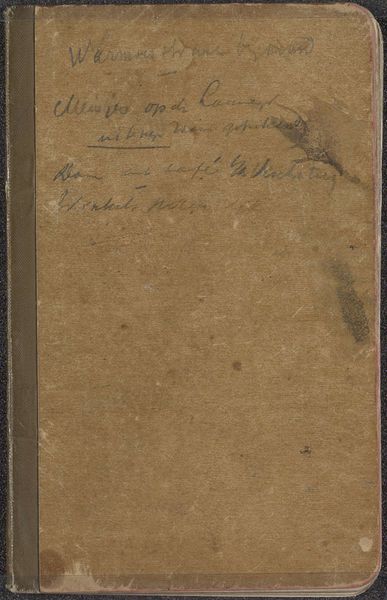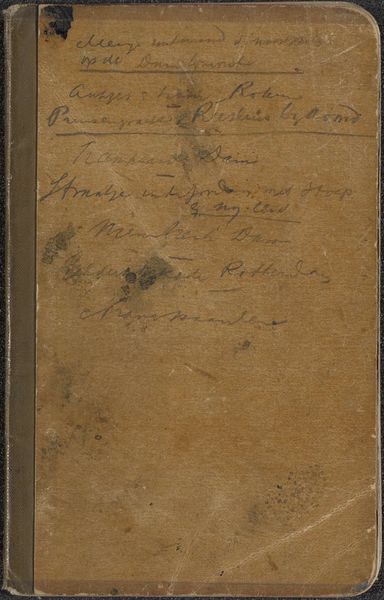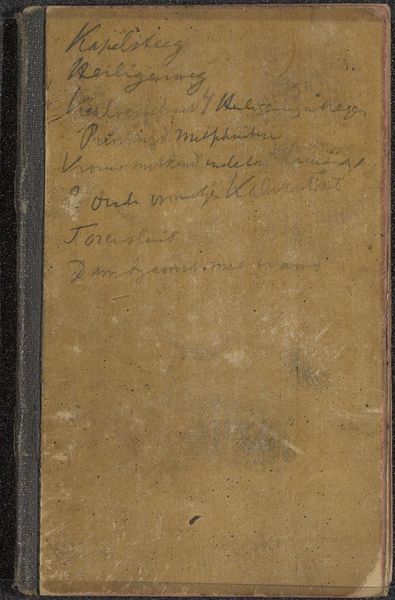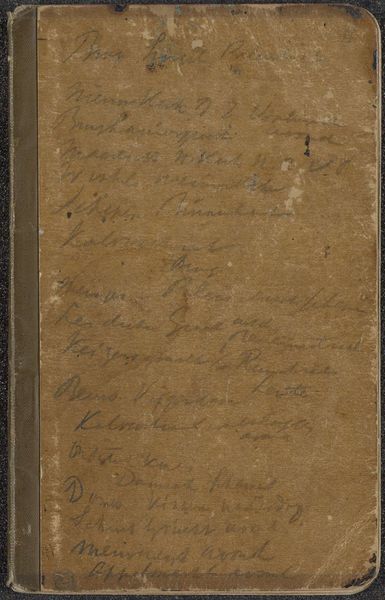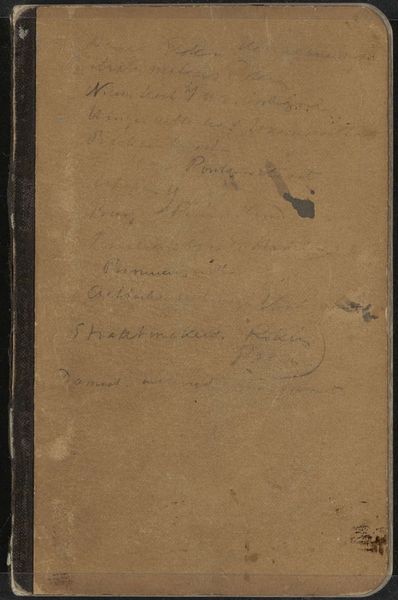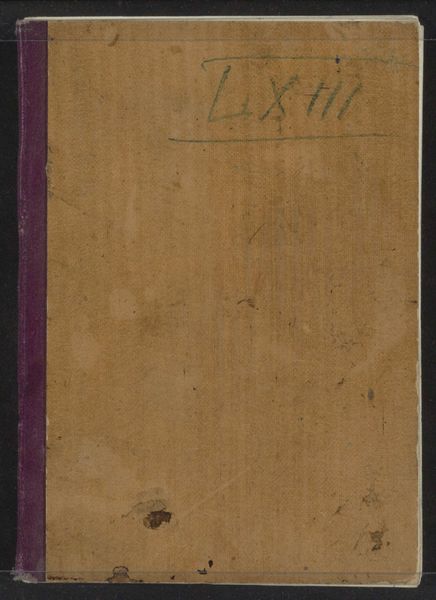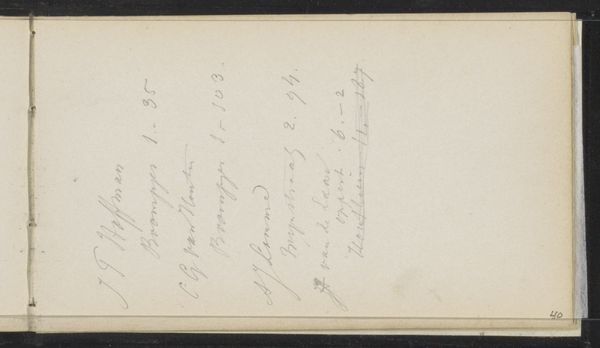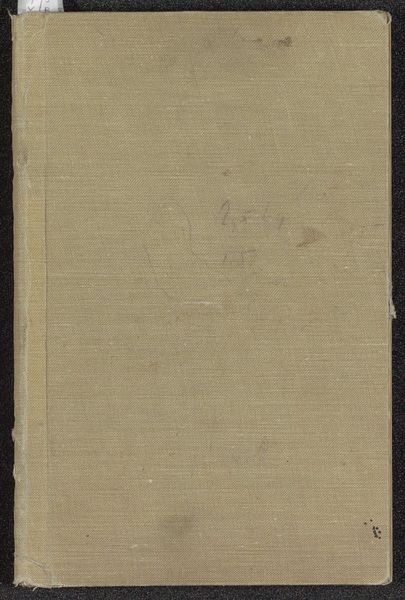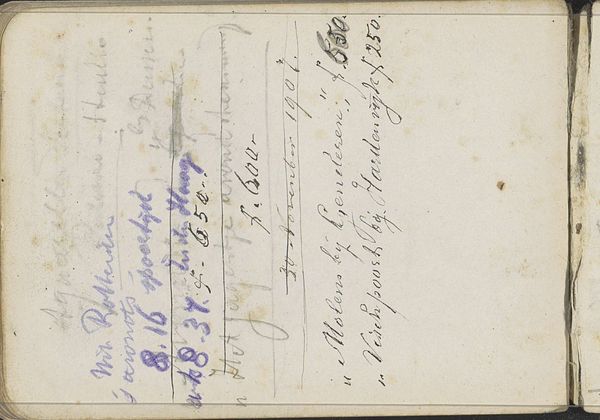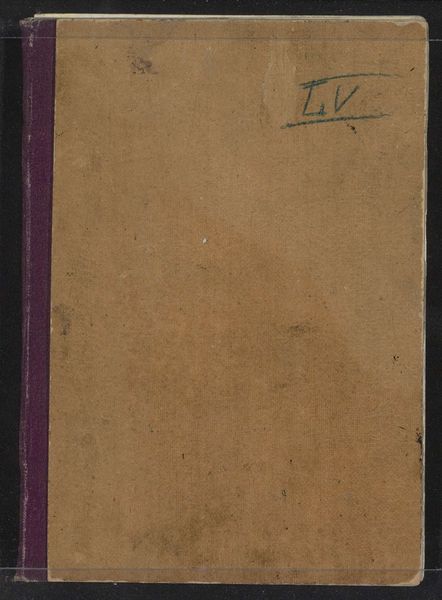
Dimensions: height 164 mm, width 103 mm, depth 6 mm, width 209 mm
Copyright: Rijks Museum: Open Domain
Curator: This object before us is titled "Sketchbook with 31 Pages," dating from around 1895 to 1898, created by George Hendrik Breitner. It currently resides here at the Rijksmuseum. My first impression is the materiality speaks of everyday usage, that this small notebook looks to be like something Breitner could have readily carried around town. Editor: Yes, the notebook conveys an air of intimacy, almost a voyeuristic peek into Breitner's artistic process. The cover looks well-worn, and there are hand-written annotations suggesting this was actively used in documenting his surroundings. Curator: Exactly, I think it is crucial to understand how these notebooks functioned within the context of late 19th century urban life. Breitner was very much embedded in depicting the modernization of Amsterdam, from its street life to its working class. Editor: I'm intrigued by what we cannot see – the individual sketches inside. Were these studies for larger paintings or explorations of themes that resonated with Breitner's perception of social and gender dynamics? What can the very specific look and state of this notebook tell us about art production at the time? Curator: The fact that it's filled with paper as a medium reinforces Breitner's interest in capturing fleeting moments. It reminds us how impressionistic and naturalist artists valued immediacy, prioritizing the raw, unfiltered experience of urban life. Editor: Perhaps through understanding how he documented these observations we can gain some understanding of how his privileged access was essential for portraying the often fraught situations of marginalized people living in Amsterdam during his time. I'm always cautious about considering art making processes removed from a clear articulation about who the production serves and empowers. Curator: Precisely. It brings into focus not only the artist’s viewpoint but also raises pressing concerns regarding representation, power dynamics, and how images reflect reality. Editor: The book and annotations serve as traces of the artist's activities in Amsterdam. Understanding these traces help us interpret how the city shaped not only the work he made, but the way he lived. Curator: Looking at an object like this reminds us how much art historical insight is contained in items like this—everyday material objects of cultural production are just as essential for study as completed masterpieces. Editor: And that critically examining the life cycle and meaning behind seemingly simple tools or surfaces of art can help contextualize complicated power structures, shedding new light on marginalized stories that have been intentionally buried, misrepresented or erased.
Comments
No comments
Be the first to comment and join the conversation on the ultimate creative platform.
